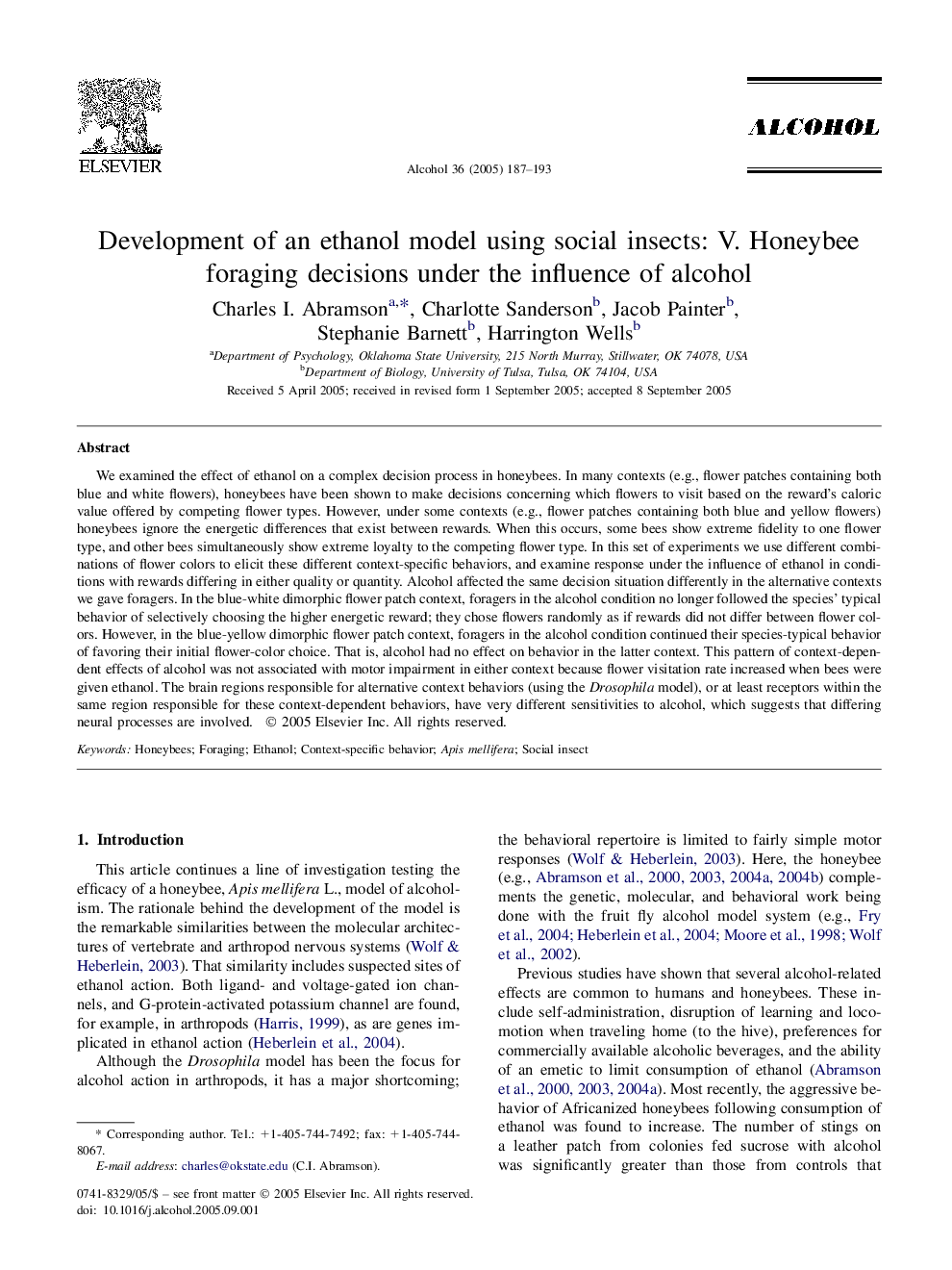| کد مقاله | کد نشریه | سال انتشار | مقاله انگلیسی | نسخه تمام متن |
|---|---|---|---|---|
| 10509265 | 948983 | 2005 | 7 صفحه PDF | دانلود رایگان |
عنوان انگلیسی مقاله ISI
Development of an ethanol model using social insects: V. Honeybee foraging decisions under the influence of alcohol
دانلود مقاله + سفارش ترجمه
دانلود مقاله ISI انگلیسی
رایگان برای ایرانیان
کلمات کلیدی
موضوعات مرتبط
علوم زیستی و بیوفناوری
بیوشیمی، ژنتیک و زیست شناسی مولکولی
زیست شیمی
پیش نمایش صفحه اول مقاله

چکیده انگلیسی
We examined the effect of ethanol on a complex decision process in honeybees. In many contexts (e.g., flower patches containing both blue and white flowers), honeybees have been shown to make decisions concerning which flowers to visit based on the reward's caloric value offered by competing flower types. However, under some contexts (e.g., flower patches containing both blue and yellow flowers) honeybees ignore the energetic differences that exist between rewards. When this occurs, some bees show extreme fidelity to one flower type, and other bees simultaneously show extreme loyalty to the competing flower type. In this set of experiments we use different combinations of flower colors to elicit these different context-specific behaviors, and examine response under the influence of ethanol in conditions with rewards differing in either quality or quantity. Alcohol affected the same decision situation differently in the alternative contexts we gave foragers. In the blue-white dimorphic flower patch context, foragers in the alcohol condition no longer followed the species' typical behavior of selectively choosing the higher energetic reward; they chose flowers randomly as if rewards did not differ between flower colors. However, in the blue-yellow dimorphic flower patch context, foragers in the alcohol condition continued their species-typical behavior of favoring their initial flower-color choice. That is, alcohol had no effect on behavior in the latter context. This pattern of context-dependent effects of alcohol was not associated with motor impairment in either context because flower visitation rate increased when bees were given ethanol. The brain regions responsible for alternative context behaviors (using the Drosophila model), or at least receptors within the same region responsible for these context-dependent behaviors, have very different sensitivities to alcohol, which suggests that differing neural processes are involved.
ناشر
Database: Elsevier - ScienceDirect (ساینس دایرکت)
Journal: Alcohol - Volume 36, Issue 3, July 2005, Pages 187-193
Journal: Alcohol - Volume 36, Issue 3, July 2005, Pages 187-193
نویسندگان
Charles I. Abramson, Charlotte Sanderson, Jacob Painter, Stephanie Barnett, Harrington Wells,